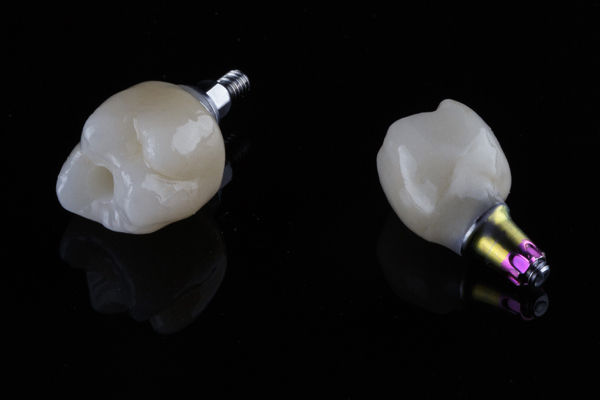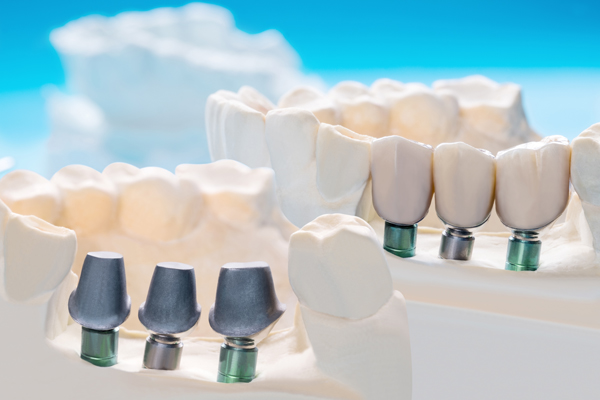Dental Ridge Preservation: Dental Implants

Dental ridge preservation is a way to preserve the socket after a missing tooth develops. Dental implants require adequate bone support, and bone loss can occur after losing a tooth if the bone density is not preserved. This review offers insights into the purpose of dental ridge preservation as it relates to dental implants treatment.
Ridge preservation and dental implants
Ridge preservation may prevent the need for a bone graft procedure after tooth extraction or tooth loss, particularly if the patient plans to replace the tooth (or teeth) with dental implants. The following is everything to know about dental ridge preservation and dental implants after a missing tooth or multiple missing teeth.
The purpose of dental ridge preservation
Dental ridge preservation, also called socket preservation or a ridge augmentation, reduces the impact of bone loss after tooth extraction or tooth loss. Bone loss can occur after a tooth extraction if the socket is not preserved. This is particularly an issue if the patient plans to replace the missing tooth with a dental implant, dental bridge or denture. If the bone loss occurs, there may not be enough healthy bone to support an implant, leading to implant failure. Fitting a bridge or denture could become a concern as well without dental ridge preservation.
Dental ridge preservation before dental implants
As mentioned, dental ridge preservation is an important step if the patient plans to replace one or more extracted or missing teeth with a dental implant. Dental ridge preservation involves filling the socket with bone or an artificial replacement substance to prevent bone loss inside the jaw. With dental ridge preservation, the patient can often jump straight into the dental implants placement process, whereas a loss of bone in the jaw may lead to a need for more extensive treatment (see below).
What to expect without dental ridge preservation
Without dental ridge preservation, the likelihood of significant bone loss inside the jaw is greater. If bone loss does occur, then the risk of a failed dental implant also increases. Patients who lose too much bone after tooth loss require a bone grafting procedure to replace the missing jawbone before the dental implants procedure. While it is safe, bone grafting is more invasive and makes the dental implants process take longer.
How the dental implants process works
The dental implants process after dental ridge preservation or bone grafting (when necessary) involves a minor surgery to place the dental implants, followed by a healing period where the implant fuses with the jawbone. Once the mouth is healed, the abutment and artificial tooth are placed to complete the restoration process, and the patient can enjoy their new smile for years to come.
Talk to our dental team to learn more about dental implants
Contact our dental team by phone or email to arrange a consultation visit if you have any dental concerns or would like to learn more about dental ridge preservation or dental implants. We are experienced and take pride in helping our patients improve the oral health and appearance of their teeth and smile.
Request an appointment here: https://www.cosmeticdentistoffice.com or call Rachel Cole DDS PC at (503) 248-1114 for an appointment in our Portland office.
Check out what others are saying about our dental services on Yelp: Dental Implants in Portland, OR.
Recent Posts
Some people simply inherit dental problems and experience them because they do not properly care for their teeth or have been involved in some type of accident. According to the American Academy of Implant Dentistry, dental implants are the strongest devices available to support replacement teeth. Even better, implants allow your new teeth to feel,…
There is a lot to think about when it comes to dental implants. This tooth-replacement treatment is an effective way to revitalize your smile and restore the ability to chew. The process can take several months, and the recovery can be lengthy. As you learn more about this procedure, you can make the right decision…
If a lost tooth is not replaced by replacement options like dental implants, you may find normal oral functions like eating and speaking somewhat challenging. The smile’s alignment and appearance will also be affected, but that is not all. Tooth loss causes bone deterioration. Dental implants can halt the progression of bone loss, but the…
If you have a missing tooth you would like to replace, you need to learn more about getting a dental implant. Dental implants can improve your smile. They can also prevent many of the problems associated with missing teeth. Implants are one of the most popular options for replacing teeth. If you are thinking about…


